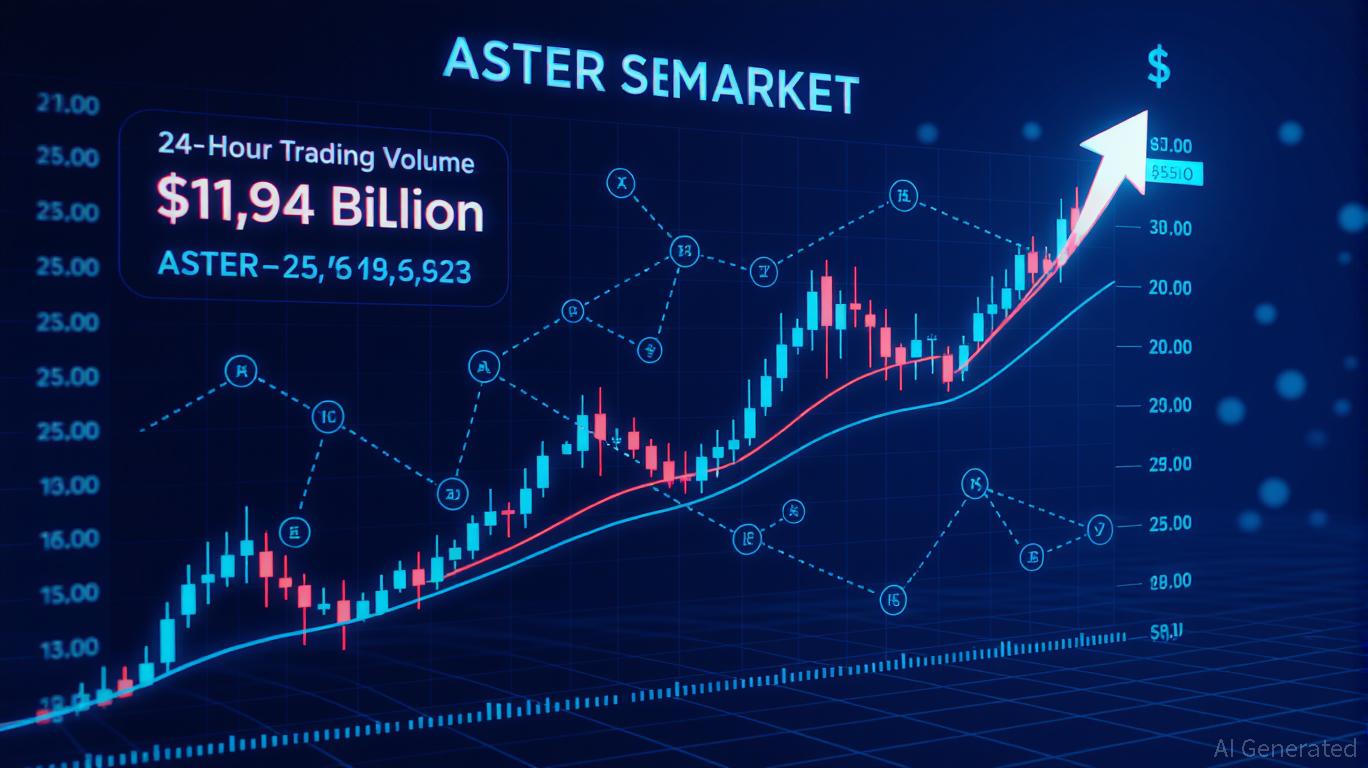Zcash Halving and Its Effects on Cryptocurrency Value: The Role of Limited Supply and Shifts in Investor Actions After Halving
- Zcash's 2024 halving reduced block rewards by 50%, tightening its deflationary supply model to 4% annual inflation by 2025. - Transition to proof-of-stake (PoS) lowered energy costs and attracted institutional investors, stabilizing network security. - ZEC surged 92% post-halving in 2025, driven by scarcity narratives, regulatory clarity, and Trump-era crypto optimism . - 2028's next halving will further cut rewards to 0.78125 ZEC, potentially accelerating price growth amid evolving crypto adoption. - Sc
Scarcity as a Catalyst for Value
Zcash’s halving events follow a set schedule, with the first on November 18, 2020, and the second on November 23, 2024, according to a
The effects of the 2024 halving on ZEC’s price were seen quickly. By the close of 2025, ZEC had climbed 92% in value, driven by several factors: clearer regulations, increased institutional involvement, and a bullish market atmosphere following Donald Trump’s return to the presidency, according to a

Mining Economics and Network Viability
The 2024 halving immediately impacted Zcash miners. With rewards per block cut in half, PoW miners saw their earnings decrease, raising questions about the sustainability of mining in an increasingly competitive and eco-conscious sector, as stated in a
Even with these changes, the halving’s deflationary effect remains complex. While limiting new supply can boost prices, it also brings up concerns about short-term network security. Smaller rewards may push out less competitive miners, potentially concentrating power among larger players. Yet, Zcash’s PoS system has addressed this by making validation more accessible, helping the network stay robust even as block rewards shrink, as noted in a
Investor Behavior and the Road Ahead
The 2024 halving has also influenced how both individual and institutional investors behave. Scarcity events often spark FOMO (fear of missing out), and Zcash’s deflationary path has intensified this reaction. According to a
Looking forward, the next Zcash halving in late 2028 will cut block rewards to 0.78125 ZEC, further restricting supply and possibly driving prices higher, as projected in a
Conclusion
The 2024 Zcash halving highlights the ongoing importance of scarcity in shaping cryptocurrency values. By cutting new supply and shifting to a more sustainable consensus approach, Zcash has managed the challenges of post-halving economics while benefiting from positive market trends. For investors, the main lesson is that scarcity, when combined with favorable macroeconomic conditions, can drive both short-term price swings and long-term growth. As the 2028 halving approaches, Zcash’s development serves as an insightful example of how protocol design, investor psychology, and market dynamics interact in the crypto world.
Disclaimer: The content of this article solely reflects the author's opinion and does not represent the platform in any capacity. This article is not intended to serve as a reference for making investment decisions.
You may also like
Astar 2.0’s New Direction: Leading the Way in Blockchain Expansion and Business Integration
- Astar Network's Astar 2.0 roadmap (2023-2025) targets blockchain scalability and enterprise adoption through zkEVM and cross-chain interoperability. - The platform achieved 150,000 TPS via hybrid architecture, aiming for 300,000 TPS to enable enterprise-grade applications across Ethereum , Polkadot , and BSC. - Strategic partnerships with Toyota , Japan Airlines, and Sony demonstrate blockchain's real-world utility in supply chains, loyalty programs, and asset tokenization. - Staking 2.0 governance and c

Aster DEX's Latest Rally: Is This the Dawn of a New Age for Decentralized Exchanges?
- Aster DEX's 2025 upgrades enabled ASTER token as collateral for perpetual trading, boosting TVL to $14.98B and 24-hour volume to $11.94B. - CZ's $2M ASTER purchase triggered 800% volume surge, while Coinbase's roadmap inclusion signaled institutional validation of its hybrid order-matching model. - The 80% margin ratio and 5% fee discount redefined token utility, attracting both retail and institutional traders through capital efficiency. - Regulatory risks from zero-knowledge Aster Chain and sustainabil

Bitcoin Sell-Offs by Whales Raise Concerns for Retail Investors

Reputed Crypto Analyst Says Bitcoin Is Sitting at Historic Support Point, What Happens Next?
